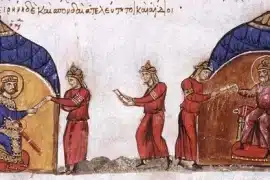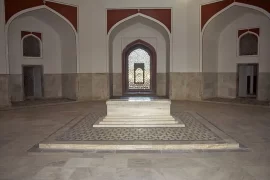Al-Andalus, also known as Muslim Spain, was a unique civilization that emerged on the Iberian Peninsula during the Middle Ages. This fascinating era lasted for over 700 years, from the 8th century until the late 15th century, and is remembered for its incredible achievements in art, architecture, literature, and science. In this article, we will explore the history of Muslim Spain or al-Andalus, its achievements, and its cultural legacy.
History
The history of Muslim Spain or Al-Andalus began with the Arab-Muslim conquest of the Iberian Peninsula in 711. The Muslim army, led by General Tariq ibn Ziyad, a Berber client of Umayyad Governor Musa bin Nusayr, defeated the Visigothic kingdom and established Muslim rule over the peninsula. This marked the beginning of a period of intense cultural exchange between the Arab and European worlds.
The Iberian Peninsula, which came to be known as al-Andalus under Muslim rule, became an integral part of the wider Muslim empire both conceptually and practically. Governors were appointed by the center or its subordinates in North Africa, thus solidifying the region’s connection to the larger Islamic world.
Although attempts at expanding the Muslim frontier further continued, defeats by the Carolingians at Poitiers in 732 and Narbonne in 759 marked a turning point. While these setbacks were not the end of the story, the pursuit of raiding northwards proved largely unprofitable for the Muslims, and was not seriously pursued after the 8th century.
Rebellions against Umayyad Caliphate
In the 740s and 750s, a pair of rebellions severed al-Andalus from the caliphate and set the region on a path to its own imperial ambitions. The first rebellion was fueled by Berber who were dissatisfied with the authorities’ favoring of Arabs over them. The revolt spread from North Africa to al-Andalus, but was crushed by an army from Syria, which then settled in the region, changing the balance of ethnic power. The second revolt, rooted in Khurāsān, overthrew the Umayyads and replaced them with the ʿAbbāsids. Only one Umayyad escaped the ensuing massacre, Abd al-Rahman b. Muawiya, who fled westward and seized control of al-Andalus with the help of surviving allies and clients.
Independent Umayyad State under Abd al-Rahman I
During the reign of Abd al-Rahman I (r. 756–788), al-Andalus achieved autonomy and an independent Umayyad state was established. It was the first Muslim polity to break away from the wider empire.
Under the Umayyad dynasty, Al-Andalus experienced a golden age of cultural and scientific advancement.
Achievements of Muslim Spain
One of the most significant achievements of Al-Andalus was its contribution to the development of mathematics. Muslim scholars in Al-Andalus made significant advancements in algebra, trigonometry, and geometry. The mathematician Muhammad ibn Musa al-Khwarizmi, who lived in Al-Andalus in the 9th century, is considered the father of algebra. He is credited with developing the concept of algorithms, which is now fundamental to computer science.
Al-Andalus also had a significant impact on the field of medicine. Muslim physicians in Al-Andalus translated and preserved the medical knowledge of the ancient Greeks and Romans. They also made their own discoveries, such as the use of alcohol as an antiseptic and the development of surgical instruments.
In the field of literature, Al-Andalus is remembered for its contribution to the development of poetry. The poets of Al-Andalus were known for their sophisticated use of language and their exploration of themes such as love, nature, and religion. The most famous poet of Al-Andalus was Ibn Zaydun, who lived in the 11th century.
Law in Muslim Spain
In al-Andalus, the Umayyads made a more decisive break with Eastern models of law. While different schools of legal interpretation competed in the rest of the Islamic world, scholars of the Mālikī school enjoyed unparalleled pre-eminence as jurists, judges, and legal theorists in al-Andalus thanks to their close alliance with the Umayyad regime.
Art and Architecture
The art and architecture of Al-Andalus were influenced by both Islamic and European styles. Muslim architects in Al-Andalus developed a unique style of architecture known as Mudéjar, which combined Islamic and Christian elements. This style is characterized by its use of brick and tilework, as well as its intricate geometric patterns.

One of the most famous examples of Mudéjar architecture is the Alhambra palace in Granada. The Alhambra was built in the 14th century by the Nasrid dynasty and is considered one of the greatest examples of Islamic architecture in the world. The palace is known for its intricate tilework, its beautiful courtyards, and its stunning views of the surrounding mountains.
Literature
The literature of al-Andalus or Muslim Spain was characterized by its diversity and its exploration of a wide range of themes. Muslim scholars in Al-Andalus translated the works of the ancient Greeks and Romans into Arabic, preserving this knowledge for future generations. They also wrote their own works, such as the famous book of aphorisms, the “Maxims of Al-Andalus.”
One of the most famous literary works of Al-Andalus is the “Book of One Thousand and One Nights,” also known as the “Arabian Nights.” This collection of stories, which includes tales such as “Aladdin and the Magic Lamp” and “Sinbad the Sailor,” was compiled in
the Middle Ages and is considered a masterpiece of world literature. Although the origins of these stories are debated, many scholars believe that they were brought to Al-Andalus by Arab traders and travelers.
Food of al-Andalus
The cuisine of Al-Andalus, or Muslim Spain, was a reflection of the region’s diverse cultural influences. It combined elements of Arab, Berber, Jewish, and Christian cuisines to create a unique culinary tradition. Some of the most notable dishes included couscous, kebabs, pastries filled with nuts and honey, and various stews made with meat and vegetables. Al-Andalus also had a strong tradition of preserving food, with techniques such as pickling and drying used to preserve fruits, vegetables, and meats. Many of the dishes and techniques of Al-Andalus have had a lasting impact on Spanish cuisine and are still enjoyed today.
Cultural Legacy
The legacy of Muslim Spain or al-Andalus is felt to this day, as the civilization’s achievements continue to influence art, architecture, and literature around the world. The Mudéjar style of architecture, for example, can be seen in buildings throughout Spain and Portugal, as well as in other parts of Europe.
In addition, the literature of al-Andalus has had a profound impact on world literature, inspiring writers such as Jorge Luis Borges and Gabriel Garcia Marquez. The “Book of One Thousand and One Nights” has been translated into numerous languages and has become a beloved classic of world literature.
Summary of Muslim Spain
Muslim Spain or al-Andalus was a unique civilization that emerged during the Middle Ages and left a lasting impact on the world. Its achievements in mathematics, medicine, literature, and architecture continue to inspire and influence people today. As we reflect on the legacy of Al-Andalus, we are reminded of the importance of cultural exchange and the power of diversity in shaping our world.







